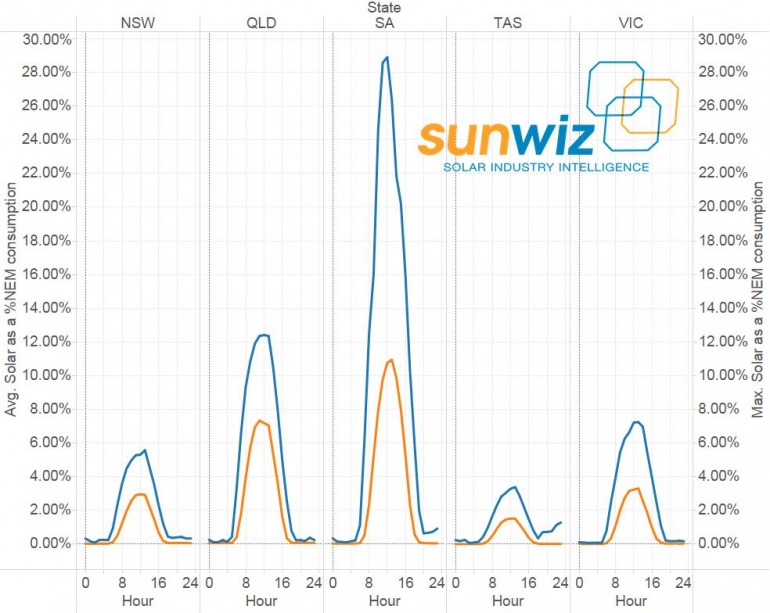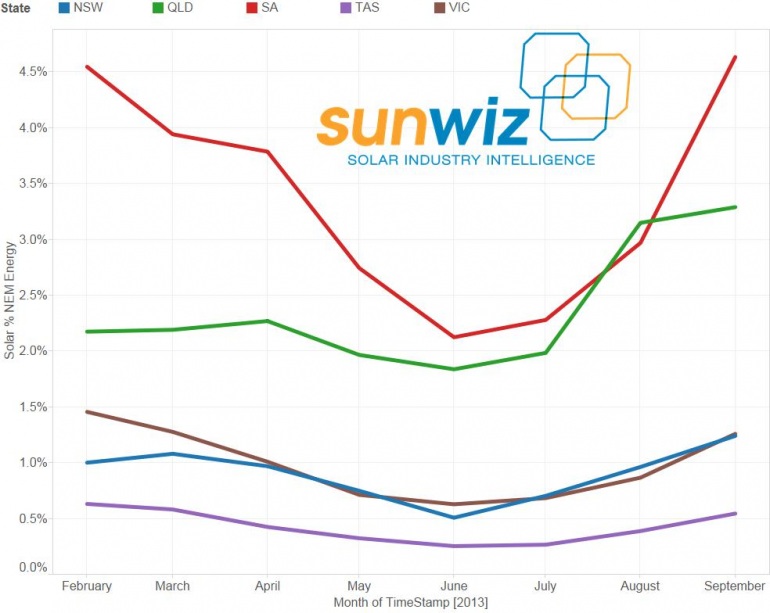Solar PV's high noon numbers
Solar PV is contributing a sizeable portion to states' midday grid, with South Australia averaging 11 per cent solar power at noon while Queensland is tipping in 7 per cent, Warwick Johnston of SunWiz has found.
Johnston says that PV is having a "non-trivial midday impact", and in some circumstances was representing more than a quarter of all power consumption.
The figures show solar power in South Australia has topped 28 per cent at some points in the sample period, from February to September this year, with the state averaging a noon mean of 11 per cent while Queensland averages 7 per cent with a peak of up to 12 per cent.

"Contribution is lower in Victoria and New South Wales, and lower still in Western Australia," Johnston said.
The analysis, which Johnston said contained some anomalies due to insufficient data sources, also found that Queensland's solar contribution found a consistent peak in August and September after dipping through winter.
"It is clear that contribution is increasing in most states; a function of the weather and of continued installations adding further power generation capacity," Johnston said.
Overall solar contribution to the National Electricity Market was 1-2 per cent, varying between months and states (SA was the highest with an average day-long contribution of 5 per cent).

Johnston also found that the various characteristics of state-by-state systems affected results.
"Some interesting characteristics of distributed energy are also revealed by the data," he said.
"Tasmania has the greatest coincidence of solar power operation, achieving over 80 per cent of nameplate capacity at one point, most likely influenced by its small geographic size.
"Queensland and NSW, though less likely to produce highly-coincident solar output from their distributed systems, are more likely than other states to produce in excess of 50 per cent of rated capacity at midday."
This is likely due to the geographic distribution of systems, Johnston said, with it unlikely to be sunny across the large states at once - yet also unlikely to be entirely cloudy.
"In Queensland over the sample period, there was a 75 per cent probability that midday solar power output exceeded 40 per cent of the nameplate capacity."
During September's Solar Sunday (the 29th), where contributions to the NEM met a record 9.3 per cent of demand, the states of Queensland, Victoria and South Australia delivered maximum solar contributions to NEM consumption (12 per cent, 7 per cent and 28 per cent respectively), while NSW was close to its best output.
Johnston added that Super Sunday was helped by low consumption on on Sundays generally, while only Tasmania was cloudy that day.

















